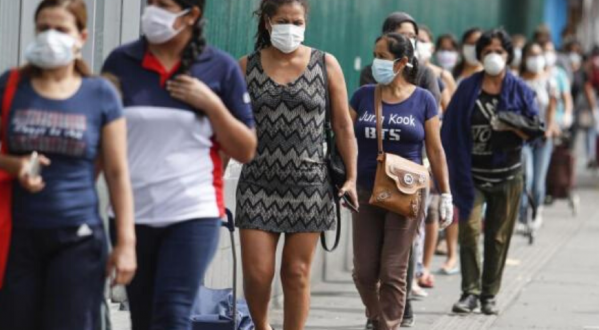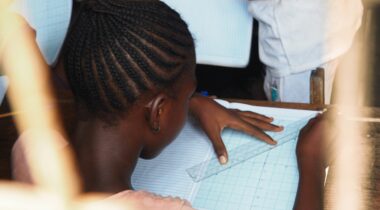
Liz Nelson ■ Women need real social protection that goes beyond the aspirational

In June 2021 the UN Special Rapporteur on extreme poverty and human rights, Olivier De Schutter, is scheduled to present his report on the establishment of a Global Fund for Social Protection to the 47th session of the UN Human Rights Council. It is timely, as he begins to gather evidence and prepare his report, to highlight this excellent research by Veronica Serafini on the pivotal role played by progressive tax regimes in establishing strong social protection for women.
We are grateful to Patricia Miranda and @latindadd for giving us the opportunity to share this blog in full.
New report “Tax Justice for the social protection of women” addresses gender gaps and inequalities in the coverage of these systems in Latin America.
In Latin America, on average, women earn 20 per cent less than men doing the same jobs. In addition, a good part of the female population in the region is dedicated to carrying out care work, without receiving any compensation for this essential work for the preservation of our societies. Most of them suffer from the limited and deficient coverage of the weak social protection systems provided by our governments.
According to Verónica Serafini, feminist economist and author of the new report “Tax Justice for the social protection of women”, to overcome this problem, one of the key pillars is to have “more tax revenues to finance gender equality in the social protection.” The report points out that there are many groups of women that will never be covered by the traditional protection system, and thus it is necessary to formalise the labour market and collect more taxes so that the State can provide protection against the adversities and vulnerabilities they face throughout their lives. “They are not sitting around waiting, they are performing jobs, both paid and unpaid, that are useful to the society. Despite this, they do not have economic autonomy in their youth nor during their adulthood and old age. They are less covered by the retirement and care systems. Many women depend on someone else throughout their whole lives.”
According to the data provided in the report, edited by the Latin American Network on Debt and Development (Latindadd), a significant share of women in Latin America and the Caribbean work without receiving a salary or do not work in the formal market, implying that they cannot contribute to the pension system. “In the case of households headed by women, 30% of the total in the region, women are single parents. In contrast, households headed by men generally have two adults who provide care, income and food. This does not happen in households headed by women; they are more complex and more vulnerable than the traditional ones”.
Serafini Geoghegan also noted that the new report presents data that helps to explain the current dissatisfaction the region is experiencing. This new report reveals the relationship that exists between taxation issues and those problems faced by women, “which is often difficult to identify. A tax system that does not work well affects women in every way, such as a social protection system with low coverage, poor quality, lack of care policies and actions against violence”, Serafini highlighted.
Worrying numbers
The report “Tax Justice for the social protection of women” highlights among many findings that while 71.9 per cent of men aged 15 years or more are active in employment, only 48.3 per cent of women participate in the labour market. In contrast, the study shows that 17.8 per cent of women in the region are exclusively dedicated to domestic chores, compared to only 0.9 per cent of men dedicated to this type of work. The existing gap in paid and unpaid work and, therefore, in the distribution of income and social protection coverage is evident.
Another point to consider when analyzing the weak structure of our social protection systems is what happens with the expansion of social security, concentrated mainly in urban sectors and in the richest quintiles of the population. Only in Brazil, Chile, Costa Rica and Uruguay, does more than half of the employed population has coverage. When looking at the case of the poorest quintiles of the population the situation is dire: less than 10 per cent of the population has coverage.
It is important to consider the need for a gender approach in social protection systems and income generation. In the region, 28.9 per cent of women over 15 years of age do not have their own income, compared to 12.5 per cent of men. However, there are cases where this gap is even deeper, such as in Guatemala, where 51 per cent of women have no source of income. In Costa Rica, Ecuador and El Salvador this figure is around 35 per cent.
Is a model change necessary?
According to the author of the new report “Tax Justice for the social protection of women” there are two main obstacles to overcome in order to achieve a social protection system with a gender perspective. “The first is the re-design of social protection systems; they are conceived from an androcentric approach: a male head of the family, who works under a dependency relationship and whose coverage will include his entire family.”
The second aspect that Serafini highlights as key to improving the coverage of these systems in our region is financing. “We can change everything to try and cover everyone, but without financing it will not be possible. If there are no resources, because there is low tax pressure, because there is tax avoidance and tax evasion and regressive tax systems prevail, it will not be solved either. On the one hand, there is the design of the social protection system that incorporates the gender perspective and, on the other hand, a tax system that guarantees the right to social protection for women”, she highlighted.
Read the report in Spanish.
Read the report in English.
Details about the UN Special Rapporteur’s forthcoming report on a Global Standard for Social Protection can be found here.
Related articles

The tax justice stories that defined 2025

Let’s make Elon Musk the world’s richest man this Christmas!

2025: The year tax justice became part of the world’s problem-solving infrastructure

Bled dry: The gendered impact of tax abuse, illicit financial flows and debt in Africa
Bled Dry: How tax abuse, illicit financial flows and debt affect women and girls in Africa
9 December 2025

The myth-buster’s guide to the “millionaire exodus” scare story

Money can’t buy health, but taxes can improve healthcare
The elephant in the room of business & human rights
UN submission: Tax justice and the financing of children’s right to education
14 July 2025

